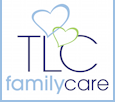Back to Sleep
Although Sudden Infant Death Syndrome (SIDS) cannot be prevented, there are things that parents and caregivers can to do reduce the risk of SIDS. One of the easiest ways to lower a baby’s risk of SIDS is to place him or her on their back to sleep, at nighttime and for naps. In 1992, the American Academy of Pediatrics (AAP) Task Force on Infant Sleep Position issued a statement recommending that infants be placed to their backs to sleep to reduce the risk of SIDS. A public awareness program, the Back to Sleep campaign was initiated by the National Institute of Child Health and Development (NICHD) in 1994 in conjunction with other health care organizations to promote education about this recommendation. Between 1992 and 1998, the number of SIDS deaths declined by 40 percent which most researchers, policymakers and SIDS professionals agree is a result of the change in sleep position.
With continued research, SIDS experts now know that other factors such as exposure to smoke, sleeping on soft bedding and becoming overheated can increase an infant’s risk for SIDS. In 2005, the American Academy of Pediatrics (AAP) Task Force on Infant Sleep Position and SIDS issued revised recommendations to incorporate these new findings. NICHD subsequently revised their Back to Sleep educational materials to include the latest SIDS risk reduction measures.
The California State SIDS Advisory Council in October 2006 unanimously endorsed the National Back to Sleep materials (i.e.: pamphlets, doorknob hangers and tear sheets) with the AAP Safe Sleep Top Ten messages for use in California. This endorsement was supported by the California Department of Public Health, Maternal, Child and Adolescent Health Division and California SIDS Program.
Expectant families, parents, babysitters, grandparents, childcare providers and everyone who cares for a baby should know and follow the Safe Sleep Top Ten recommendations listed below.
1. Infants should be placed for sleep in a supine position (wholly on the back) for every sleep. Side sleeping is not as safe as supine sleeping and is not advised.
2. Use a firm sleep surface. Water beds, quilts, etc., should not be placed under an infant. A firm crib mattress covered by a sheet is the recommended sleeping surface.
3. Keep soft objects, toys and loose bedding out of the baby’s sleep area.
4. Do not smoke during pregnancy. Do not expose babies to second hand smoke after birth.
5. A separate, but proximate, sleeping environment is recommended. That is, room-sharing is to be encouraged, but not bed sharing. Babies brought to an adult bed for breastfeeding should be returned to their own sleep area when breastfeeding is finished.
6. Consider offering a pacifier during sleep. A pacifier should not be reinserted if it falls out after the infant is asleep. The pacifier should not be coated with sweet liquids and should be washed and replaced regularly. For breastfed infants, pacifier use should be delayed until one month of age to ensure breastfeeding is firmly established.
7. Avoid overheating. Over bundling should be avoided and the infant should not feel hot to the touch.
8. Avoid commercial devices marketed to decrease the risk of SIDS; such as wedges to maintain an infant’s position or “flow-through” mattresses designed to eliminate rebreathing.
9. Do not use home monitors as a strategy to reduce the risk of SIDS.
10. Avoid the development of flat heads (positional plagiocephaly). Supervised “tummy time” while baby is awake and alternating the sleeping direction of the head during
